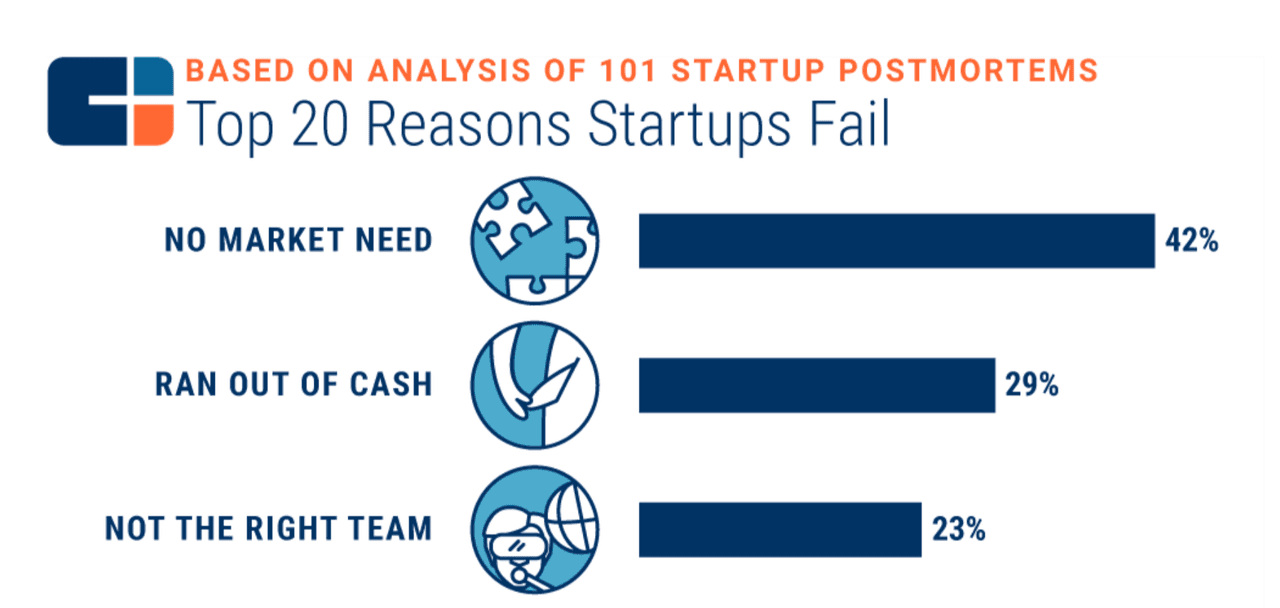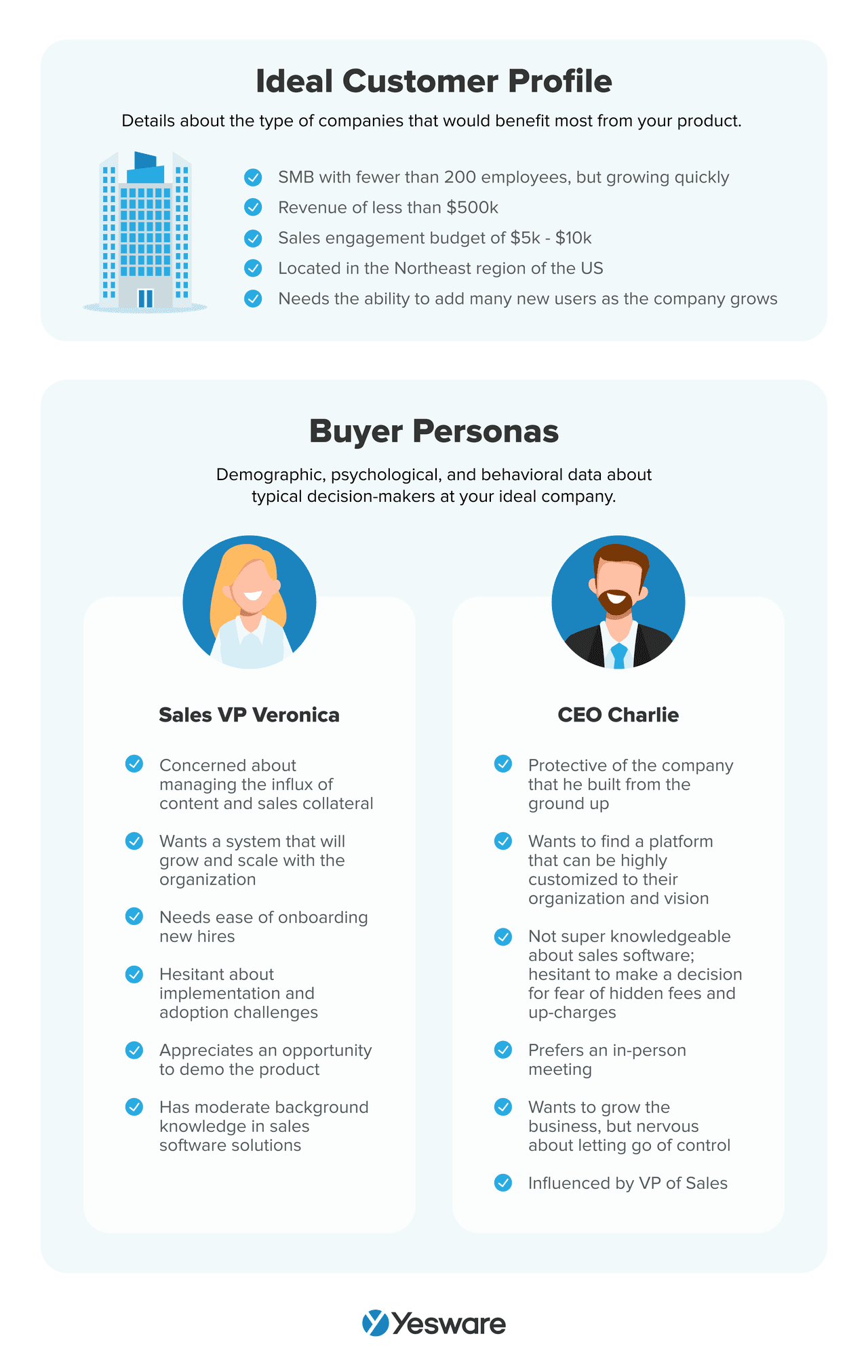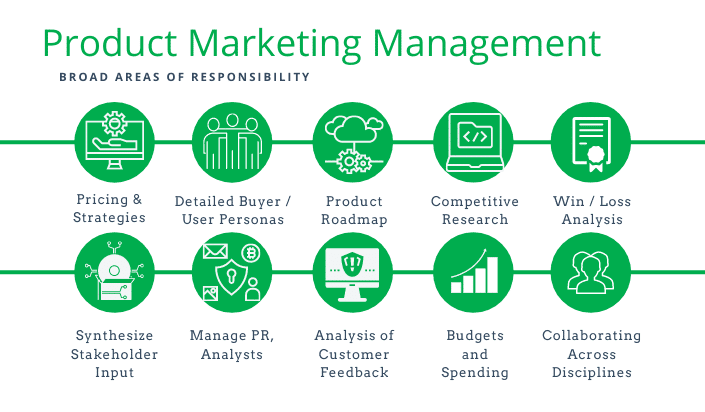Go-To-Market Strategy: Process, Framework, Examples
Casey O'Connor
Contents
- What Is a Go-To-Market (GTM) Strategy?
- Why Do You Need a Go-To-Market Strategy?
- When Do You Need a Go-To-Market Strategy?
- The Components of a Go-To-Market Strategy
- Who Is Responsible for Go-To-Market?
- Types of Go-To-Market Strategies
- 6 Steps to Build Your Go-To-Market Strategy
- How to Measure the Success of Your GTM Strategy
- Go-To-Market Strategy Example
An effective go-to-market strategy is critical for any business launching a new product or an existing product in a new market.
The GTM strategy outlines the many moving pieces of bringing a product to market, including information about the target audience, the marketing strategies to be implemented, and the sales strategies that will be used to sell it.
In this article, we’ll go over everything you need to know about the go-to-market strategy, including when to design one and what to include.
Here’s what we’ll cover:
- What Is a Go-To-Market Strategy?
- When Do You Need a GTM Strategy?
- The Components of a Go-To-Market Strategy
- Who is Responsible for Go-To-Market?
- Types of Go-To-Market Strategies
- 6 Steps to Build Your Go-To-Market Strategy
- How to Measure the Success of Your GTM Strategy
- Go-To-Market Strategy Example
What Is a Go-To-Market (GTM) Strategy?
A go-to-market strategy is a playbook that outlines the specific things marketing and sales teams need to execute in order to successfully launch a product to market.
 The go-to-market strategy should address a number of factors, plans, and strategies, including:
The go-to-market strategy should address a number of factors, plans, and strategies, including:
- The market problem, and your product’s positioning as the solution to that problem
- The target audience and their pain points
- Marketing and sales plans, with timing being a specific decision factor
- The state of the market you’re planning to enter
The GTM strategy should demonstrate a strong value proposition and unique positioning among the competition. Ideally, the GTM is designed in a way that enhances the buyer’s experience.
In sum, the go-to-market strategy addresses three questions:
- Who is the customer?
- What is our offering?
- How can we reach the customer with the product in a scalable, repeatable way?
Why Do You Need a Go-To-Market Strategy?
Every B2B company needs a go-to-market strategy. The GTM strategy should be used whenever your organization is:
- Launching a new product in an existing market
- Launching an existing product in a new market
- Testing a new product’s market
The GTM strategy exists to help marketers and sales teams determine the product-market fit before roll-out so that any kinks in the product or process can be addressed.
Go-to-market strategies help prevent strategy/execution mistakes, oversights, and unnecessary complications in each of these scenarios. They help organizations prepare to position their product perfectly according to their budget, their market’s needs, and the specific qualifications of the buyer persona(s).
When Do You Need a Go-To-Market Strategy?
The GTM strategy, first and foremost, needs to address whether or not there is a need for your product — most startups fail because they realize too late that there is no room for their offering in the market.

Any time your team launches a new product or launches an existing product into a new market, you should develop a go-to-market strategy. Defining the need is the first and most important step of the process.
There are other times, too, that warrant a GTM strategy. The inefficiencies outlined next may be less defined, and perhaps harder to pinpoint than the launch of a new product, but still all indicate the need for a go-to-market planning session.
Reduce Time to Market
Time to market (TTM) represents the amount of time it takes for a company to bring a new product from the point of conceptualization to its first release into the market.
Shorter TTMs have been shown to cost fewer overall resources, offer a significant competitive advantage, and generate more revenue over time.

A solid GTM strategy will help your sales team orchestrate an efficient and profitable product launch.
Save Costs After Too Many Failed Products
Launching new products can be an expensive endeavor for teams that aren’t mindful of how they plan. Unfortunately, many businesses have first-hand experience in this — over 95% of new product launches fail.
If your team isn’t new to launching products, but yet still struggles to come out ahead, a GTM strategy can help.
The GTM strategy will ensure that product-market fit, strategic messaging, pricing strategy, and target audience are all given the green light before your product hits the shelves.
Provide a Positive Customer Experience
Even for companies who do take initiative in creating a GTM strategy, finding the right approach can be a challenge.
Here’s the secret: align your go-to-market strategy with the buyer’s journey.

For a top-tier GTM strategy, design your content marketing plan — including mapping out the marketing channels and social media platforms you’ll use — around the needs, values, and pain points of your ideal customer.
The Components of a Go-To-Market Strategy
The way in which your team designs and executes your go-to-market plan will be unique to the business plans, strengths, and goals of your specific organization.
That being said, there are some basic frameworks that can effectively guide you through the process of creating your own. Here’s one example in flow-chart form:

The following are some things that any GTM strategy should include.
Product-Market Fit
When you measure product-market fit, you’re essentially gauging whether there’s a need and room for your product in the market.

In other words, the PMF is designed to show how well a product fills a need in a market and how likely the sales team is to be successful in selling it. Every GTM strategy needs to validate PMF before anything else.
Target Audience
Another core component of the GTM strategy is defining the target market. Your sales and marketing teams should work together to create detailed Ideal Customer Profiles (ICPs), and buyer personas for each decision-maker in their target accounts. You’ll want to flesh out who exactly your buyers are, their pain points, and how much they’re willing to spend on a solution.
You’ll want to flesh out who exactly your buyers are, their pain points, and how much they’re willing to spend on a solution.
Of note, Gartner reports that the average B2B buying group includes six to ten decision-makers — be sure to create buyer personas for each.
Competition
A thorough GTM strategy should also include a competitive analysis that defines your unique selling proposition. This will help your salespeople define their messaging and communicate with potential customers in a way that helps you stand out.
One way to address this component is by creating sales battle cards, such as the one shown in the template below.  Sales reps can use these throughout the sales process to effectively connect with and persuade target customers.
Sales reps can use these throughout the sales process to effectively connect with and persuade target customers.
Demand
You’ll also want to use the GTM strategy as a way to highlight the level of demand for your product.
Note that the “demand” piece is different from “demand generation.” Demand generation describes how you plan to attract inbound sales; demand refers to how big of a need exists vs. how much supply is currently available.  The level of demand will help your team determine whether you have a viable business case for your product.
The level of demand will help your team determine whether you have a viable business case for your product.
Distribution
Your GTM strategy needs to also discuss how you plan to distribute your product and offer customer support.
Of course, this isn’t necessarily a sales-specific job. But it’s important that everyone from marketing to sales to the customer support team are informed of each of the steps in the chain of the go-to-market strategy.
Metrics
It’s also worthwhile to include your most recent sales metrics and KPIs, as well as your future goals.
While these stats don’t necessarily have any bearing on the tangible strategies you’ll use to launch your product, it’s important to keep in the back of your mind where your performance currently stands, and where you’re hoping to end up.
Branding and Messaging
According to a 2019 Edelman study, over 80% of consumers said they need to trust the brand from which they make a purchase.
One way to earn this kind of trust is through rock-solid branding and well-refined messaging. A value matrix can help add structure to the process of defining your position.

Remember, too, to test and track how effectively your various message points resonate with your buyers.
Tip: Grab some psychology-backed tips and strategies to ensure your message resonates with buyers.
 Psychology Principles + 13 Power Words for Winning SalesData-backed psychological principles, nonverbal cues, and persuasive phrases to win more deals.
Psychology Principles + 13 Power Words for Winning SalesData-backed psychological principles, nonverbal cues, and persuasive phrases to win more deals.
Strategies
Perhaps the star of the GTM strategy show, your marketing and sales strategies will make up a large bulk of the actual document.
In it, your teams should outline strategies for all of the following:
- Lead generation
- Demand generation
- Content marketing
- Pipeline optimization
- Sales channels
- Shortening the sales cycle
- Reducing customer acquisition cost
- Tapping into your existing customer base
- Onboarding new customers
Depending on your team’s goals for the product launch, you may address additional strategies, as well.
Who Is Responsible for Go-To-Market?
In general, the product marketer is responsible for heading up the development of the GTM strategy. For some sales teams, this may be a new role.
The responsibilities of the product marketer may be familiar, even if the job title isn’t. They hold a number of other responsibilities within the sales and marketing departments.

Although the product marketer takes the lead, it’s still important that sales and marketing are fully involved in the process of creating the GTM strategy. This document is best addressed collaboratively — this will ensure the highest likelihood of customer success.
Sales and marketing alignment is key here.
Types of Go-To-Market Strategies
Historically, there have generally been two main types of GTM strategies: the product-led GTM strategy and the sales-led GTM strategy.
Product-Led GTM Strategy
A product-led GTM strategy puts the product itself front and center when it comes to attracting new leads and retaining satisfied customers. The product actually acts as the salesperson through the value it provides the user, and customers are able to buy, renew, and upgrade directly within the product itself. There is usually little contribution from the sales team with a product-led GTM strategy.
Sales-Led GTM Strategy
A sales-led GTM strategy, on the other hand, uses resources from both sales and marketing to generate interest in a product and close deals. Almost all sales in a sales-led GTM strategy are initiated and closed by a sales rep.
Hybrid Strategy
Both types of GTM strategies can be very effective in the right context. Given the many pros and cons of using each strategy independently, many teams have actually opted to create a hybrid of the two. The product-led sales GTM strategy takes pieces from product-led and sales-led GTM strategies and combines them to create a new approach.
In a product-led sales GTM strategy, sales and product are partners; they both contribute to closing the deal.
An organization may offer product-led strategies like free trials or free features, while simultaneously training the sales team to be ready to jump in as needed to address prospect questions or concerns, and ultimately to guide the deal to close.
The product-led sales GTM strategy seems to have presented a perfect middle ground for many B2B companies. In fact, over 80% of SaaS sales teams report using a product-led sales GTM strategy.

Regardless of which kind of GTM strategy your team may choose, it’s important that sales and marketing are on the same page about how exactly it will be designed and executed.
6 Steps to Build Your Go-To-Market Strategy
Follow these steps to build an effective GTM strategy for your own team.
1. Define Your ICP and Buyer Personas
The first step in designing any GTM strategy is to clearly define, in detail, your ideal customer profile and the various buyer personas you may encounter in the buying process.
Most buyer personas fulfill specific individual roles in the buying process. A User, for example, is someone involved in the buying process that will ultimately use our product. An Influencer is someone who has sway over others in their organization and can help convince others to agree to the purchase.
Other buyer roles may include Gatekeeper, Decision Maker, or Initiator. You should develop buyer personas for each of these.

Don’t cut corners here — the success of your GTM strategy will depend on how clearly and accurately you’re able to define and attract your ideal buyer — especially if there are multiple people involved in the buying process.
2. Research the Competition
Competition is another critical component of an effective GTM strategy.
Spend plenty of time analyzing who your competitors are in your market, and how they position their offer. Understanding how your competition exists in the market will help you stand out from the crowd.
3. Create a Value Matrix
A value matrix, though not necessarily a required component of a GTM strategy, can be incredibly helpful in defining how your product can meet the unique needs of your buyer better than your competitors’ can.
As shown above, a value matrix is a detailed outline of each buyer persona, their pain points, and how — specifically — your offer speaks to those pain points and problems. The value matrix helps marketers and salespeople craft effective and targeted language around the value your product can bring to the prospect’s organization.
Use what you know about your most successful customers to help create the value matrix. Whenever possible, use the specific language they use to describe their problems and the value they find in your product.
4. Set Goals
A good bulk of your GTM work is complete once you’ve defined your market and where you sit among the competition. Once those are clearly defined, it’s time to set some goals.
Use the SMART goal framework to help your team define what exactly you hope to achieve with your GTM strategy.  This goal-setting approach will help ensure that you can easily measure the effectiveness of your GTM strategy and make adjustments as needed.
This goal-setting approach will help ensure that you can easily measure the effectiveness of your GTM strategy and make adjustments as needed.
5. Choose and Implement Your Strategies
Before you can deploy your GTM strategy, you need to define what approaches, tactics, and/or content you’ll use to execute it.
There are a variety of ways to do this. The biggest-picture decision you’ll need to make is whether you’re tackling your GTM strategy via inside or outside sales. Many teams choose a hybrid of both approaches.
Your specific tactics don’t need to be set in stone; it’s okay to adapt as you see fit as you watch the GTM strategy unfold.
6. Test and Optimize
When the GTM strategy is complete, it’s time to deploy it in the field. But there’s one more step in the process that sales teams need to follow once it’s executed: testing and optimizing the effectiveness of the GTM strategy.
Be sure to carefully track sales metrics and KPIs to determine where and how to spend your resources for attracting and retaining happy customers.
Developing effective GTM strategies takes time, and will likely require several iterations before your teams feel completely comfortable with the process.
How to Measure the Success of Your GTM Strategy
Any GTM strategy that’s expected to be successful should be continuously monitored, tracked, and adapted as needed.
The following metrics, in particular, will help teams measure the success of their GTM strategy:
- Website visits
- Click-throughs
- Outbound calls
- Conversation time
- Customer acquisition cost (CAC)
- Average revenue per customer
- Cash flow
- Churn rate
- Average revenue
- Recurring revenue
- Net revenue retention
Your sales team should be able to review these metrics in relation to the SMART goals you set when you created your GTM strategy.
Go-To-Market Strategy Example
One of our favorite go-to-market strategy examples was created by Microsoft.
In 2014, Microsoft launched the third edition of their tablet, Surface. The tablet’s introduction came at a time when many people were already using either:
- A Microsoft OS on a desktop or laptop, or
- An Apple iPad or other tablet
The GTM strategy for their third-generation Surface tablet took a different approach. They were testing a new product — a fully-functional computer in tablet form — in a new market. They chose to market the Surface to the market of people who were looking for a highly portable yet fully capable computer.
This positioning helped Microsoft set itself apart. It was not competing with itself in regards to desktop computers, because the market for the Surface consists of people looking for portable devices. On the other hand, they also weren’t competing with iPad users — their product was less tablet and more computer.
Microsoft developed a very effective GTM strategy that helped them position themselves as completely unique among the extremely crowded computer-and-tablet market.
What does your GTM strategy look like? Have you designed one before? Try following the framework outlined in this article the next time you gear up to launch a new product.
Get sales tips and strategies delivered straight to your inbox.
Yesware will help you generate more sales right from your inbox. Try our Outlook add-on or Gmail Chrome extension for free, forever!
Related Articles
Casey O'Connor
Casey O'Connor
Casey O'Connor
Sales, deal management, and communication tips for your inbox

